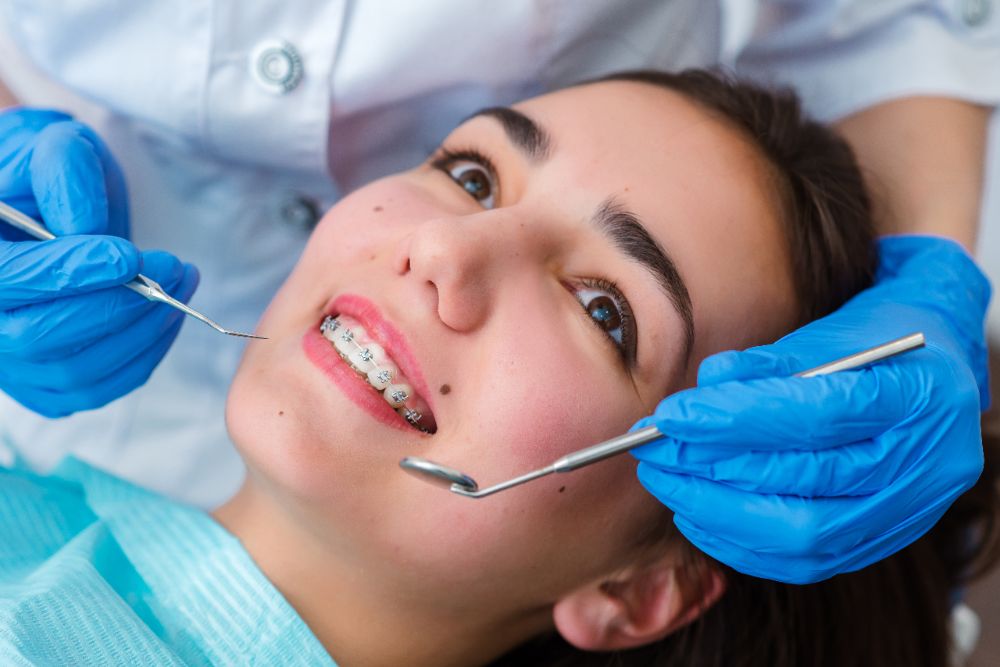Locating the Right Cumming Orthodontist for Your Braces and Aligners Requirements
Locating the Right Cumming Orthodontist for Your Braces and Aligners Requirements
Blog Article
Comprehensive Overview to Orthodontics Procedures for Remedying Oral Misalignments
Comprehending the ins and outs of each treatment, including their devices, benefits, and prospective disadvantages, is important in making notified decisions about one's orthodontic treatment. As we browse via the thorough overview to orthodontic procedures for correcting oral misalignments, the complex details of each method will certainly unravel, losing light on the path towards a harmonious and useful dental alignment.
Orthodontic Procedures Review

In addition to clear aligners and traditional dental braces, orthodontists may additionally advise various other interventions like headwear, palatal expanders, or retainers to attend to certain placement concerns (cumming aligners). These treatments are tailored to every patient's one-of-a-kind requirements and might involve a mix of treatments to accomplish the desired outcomes. Normal adjustments and tracking are critical parts of orthodontic treatment to make sure progression is on track and to make any type of essential alterations along the method. By undergoing orthodontic procedures, clients can not just achieve a straighter smile however additionally boost their total dental wellness and feature.
Traditional Braces: Just How They Work
When considering orthodontic therapies for oral imbalances, conventional dental braces stick out as a time-tested method for dealing with teeth placing. Standard dental braces include braces, cords, and bands that interact to use constant stress on the teeth, progressively relocating them right into the preferred positioning. The brackets are affixed to the teeth utilizing a special adhesive, and the cords are threaded with the brackets. By adjusting the stress of the cords, orthodontists can regulate the instructions and force used to each tooth, leading them into proper placement over time.
As stress is used to the teeth via the dental braces, the bone bordering the teeth is improved to support the new tooth settings. Individuals will certainly need regular adjustments at the orthodontist's office to ensure the dental braces proceed to use the appropriate pressure for effective teeth movement.
Invisible Aligners: Pros and Cons
These clear, tailor-made trays are practically invisible when put on, making them an enticing alternative for individuals looking for a much more visually pleasing orthodontic therapy. Individuals can remove the aligners before consuming or cleaning their teeth, minimizing the risk of food obtaining stuck in the appliance and simplifying the cleansing process.

Surgical Orthodontic Options
Surgical interventions in orthodontics present practical choices for dealing with complex dental misalignments that might not be properly solved through standard orthodontic therapies. While traditional braces and undetectable aligners can remedy several orthodontic concerns, specific instances need surgical treatment to attain optimal outcomes. Surgical orthodontic choices are normally suggested for serious malocclusions, considerable jaw discrepancies, and instances where the underlying bone framework needs alteration to attain appropriate alignment.
One usual surgical orthodontic treatment is orthognathic surgical procedure, which involves rearranging the jaws to remedy functional issues such as trouble chewing or talking. This surgical treatment is frequently performed in partnership with an orthodontist who aids align the teeth prior to and after the procedure. Surgical orthodontics might likewise involve treatments to expose influenced teeth, eliminate excess gum cells, or reshape the jawbone to develop a much more harmonious face profile.
Prior to taking into consideration surgical orthodontic alternatives, clients undertake a detailed assessment to determine the need and potential advantages of such interventions. cumming braces. While see here surgical treatment might seem challenging, it can significantly enhance both the feature and appearances of the smile in situations where conventional orthodontic therapies drop short
Retainers and Post-Treatment Care

Post-treatment treatment involves complying with the orthodontist's guidelines faithfully. This may include proper oral hygiene methods, participating in follow-up consultations, and putting on the retainers as suggested. Failing to adhere to post-treatment care instructions can result in relapse, where the teeth gradually move back towards their original positions. Constant retainer wear, excellent oral hygiene, and regular oral examinations are vital for keeping the results accomplished through orthodontic surgery and making certain the lasting security of the corrected dental placement.
Verdict
Finally, orthodontic procedures use numerous choices for remedying dental misalignments. Conventional braces make use of steel brackets root canal therapy and cords to shift teeth right into appropriate alignment. Unnoticeable aligners offer an even more discreet choice however may not appropriate for all situations. Surgical orthodontic options are available for extra serious misalignments. Retainers are frequently utilized post-treatment to preserve the new placement. In general, orthodontic treatments can successfully improve oral wellness and aesthetic look.
As we browse via the extensive overview to orthodontic procedures for remedying oral misalignments, the complex details of each method will unravel, shedding light on the course toward a unified and functional dental positioning. - orthodontics
One of the most typical orthodontic therapies is the use of braces, which consist of metal braces and cords that use mild stress to gradually shift teeth into the desired placement.When thinking about orthodontic treatments for oral imbalances, traditional dental braces stand out as a time-tested method for correcting teeth placing. Furthermore, undetectable aligners might not be appropriate for complex orthodontic concerns that require even more considerable teeth activity, as they are normally suggested for mild to moderate situations. Retainers are personalized orthodontic devices developed to hold teeth in their dealt with placements after the conclusion of orthodontic therapy.
Report this page